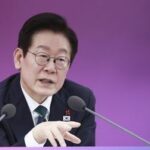Japan’s First Offensive Weapon Export After World War II
The South Korean defense industry interprets Japan’s move as an intention to curb the Korean defense industry as the boom in the South Korean defense industry intensifies, along with Japan’s transition to a normal country. Since the Ukraine war, countries worldwide have been increasing their defense spending.
In this process, Korea quickly expanded its foothold in the global defense market by selling K2 Black Panther tanks and K2 self-propelled guns to Poland in 2021. Over the two years from 2022 to 2023, its defense exports achieved an average export performance of over 15 billion dollars. Fighter jet exports also exceeded 1 billion dollars for the first time in 2023. It recorded an export amount of 1.01 billion dollars, a 321% increase compared to 2022.
On the other hand, Japan was blocked by the Peace Constitution and could not export defense equipment. Japanese defense companies, which can only supply the equipment they have developed to the Self-Defense Forces and cannot export to other countries like Korean companies, are evaluated to have meager profitability in product development.
However, the prolonged war between Russia and Ukraine, the Israel-Hamas war, and other factors that have influenced the rapid growth of the Korean defense industry have ignited Japan’s will to rebuild the defense ecosystem, and Japanese defense companies are also actively jumping into the global market.
A military expert said, “The boom in the South Korean defense industry in the rapidly growing global defense market since the Ukraine war broke out seems to have stimulated the Japanese government and defense companies,” and “If Japan expands its defense exports centered on materials, parts, and equipment, in which it has strengths, Korea and Japan may enter a competitive structure for defense exports.”
![日, K방산 발목 잡나?…공격용 무기까지 수출 나선다[이현호 기자의 밀리터리!톡]](https://contents-cdn.viewus.co.kr/image/2024/04/CP-2023-0094/image-68e59c94-69b8-430a-b789-a49eb88a49b2.jpeg)
The Japanese defense ministry and defense companies are showing their presence by actively participating in overseas defense industry exhibitions and sales. Some consider them the “new dark horse in the rapidly growing global defense market after the Ukraine war.”
For instance, in February, the Japanese Ministry of Defense set up a booth for the first time at the Singapore Airshow, Asia’s largest aerospace and defense exhibition. A record 13 companies participated, surprising the global defense industry. Eight companies participated at the DSEI, the largest defense exhibition in Europe, held in London, UK, in September last year. At the maritime defense exhibition (Indo-Pacific) held in Sydney, Australia, in November last year, ten companies also participated, accelerating their sales.
At the Singapore Airshow, Kawasaki Heavy Industries, the flagship of the Japanese defense industry, exhibited models of domestic military aircraft such as the P-1 patrol aircraft and the C-2 transport aircraft. Advanced products such as air defense radars (NEC) and AI semiconductors (EdgeCortix) were also exhibited. Small Japanese companies also attracted attention by showcasing samples of aerospace parts (Asahi Metal Industry, Kurimoto, and Takagi Steel).
A South Korean defense industry official who attended the exhibition said, “Unlike Korea, where no companies participated except for Korea Aerospace Industries (KAI), Japan is actively participating in overseas defense exhibitions and launching sales, targeting the rapidly increasing Korean weapons exports.”















Most Commented